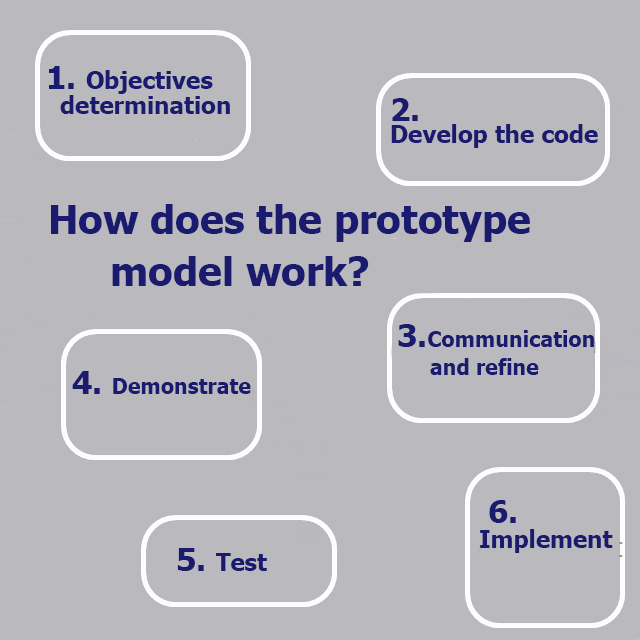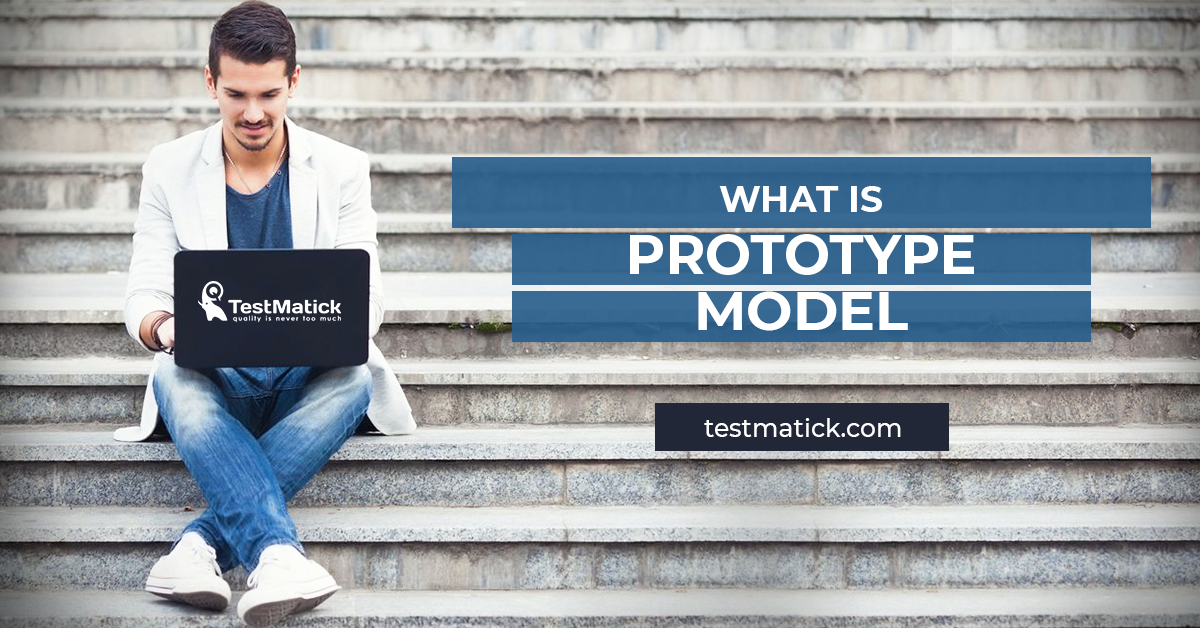In most cases, people use the prototype model in order to create an unfinished software version and its additional systems. This is some kind of special method that helps to make and improve any software.
You can use such an approach during the creation and testing of a product even at early stages. It is a completely iterative process. Also, this method is perfect in the cases when there’re initial requirements to the developed software.
Specialists design the prototype model for those requirements only which can describe the product and all its parts in detail. You may start working on the prototypes when you have a final design. Software model that was made like a prototype includes only working programs which one can make really quickly.
Stages of Establishing a Classic Prototype Model
There are the following basic phases:
- Communication. At this stage client with the developers set up meetings about the objectives which should / must be achieved for the software.
- Design (the exterior of the model). After the team gets requirements and user stories, the specialists create the design of the model which include all the main implementation challenges. In most cases, design shows the external aspects of software performance (but not the unseen ones).
- The modeling process. It allows the project team to understand the task during the visualization of needed functionality and outside execution.
- Deployment. Before deployment, the client can evaluate the potential of future software. And if he/she doesn’t like something, it must be refined according to the client’s requirements.
Such a process is implemented until all the requirements will be achieved. After the client approves the software model, it will be developed inside the real workplace environment. The specialists create and test the product thoroughly. Meanwhile, technical support analyzes the current state on a regular basis.
Advantages of the Prototype Model
Usage of this method has a lot of advantages, such as:
- It makes a client and developer closer in the way of creating the product which was required and paid before.
- The client can see the released functionality at any time, as well as analyze the moments that weren’t developed and implemented in the software architecture. Moreover, the client has the opportunity to edit and change technical specifications.
- A lot of defects can be identified at the preliminary stage of the project implementation.
- It allows making effective communication with a client in order to edit something during the web product implementation.
- Also, this method allows significantly reduce the time and engineering costs.
- You can find unimplemented, broken or difficult functionality in any prototype model.
Disadvantages of Prototypes Usage Approach
The main disadvantages of the prototype method are the following:
- Sometimes the client can hardly find the difference between actual result and prototype after he/she gets the product.
- You cannot use the prototype model if there’re no strict requirements.
- The process of creating the prototype models increases the timescale for the difficult objectives achievement.
- You cannot use the current prototype on future projects, even if they will be similar technologically.
- Sometimes it is really hard to create a model.
- Some companies take a skeptical approach to prototypes because such models take some valuable time.
- The client may not understand some changes, so he/she hardly gets the current state of the developed web product.
When Should You Use the Prototype Model?
This approach will be the most effective in the situation when the project team has to create the system with a big deal of interaction (for example, with online services, payment systems, and user interfaces).
Since these software versions require huge data processing, you need to create a lot of samples at the preliminary stage of the project implementation. Specifically, you should have the following models of: the product’s functioning; software performance at critical moments; and the hidden parameters which may be worked over with unseen corruption.
With the help of the prototype model, the project teams can keep all software specifications simple for the client.
How Does the Prototype Model Work?

How does the prototype model work
In the classic sense, the prototype model should work like this:
- Objectives determination;
- Develop the program code;
- Generalization and specification of tasks;
- Preliminary test;
- Test activity;
- Final product implementation.
For the programmers the prototype is:
- The primary software objectives defying on the basis of detailed client’s requirements and wishes.
- Gradual implementation of 2-3 functions for any logic completeness.
- Work on future designs.
- Opportunity to discuss with all interested participants the important peculiarities of the project, specific moments and others.
- Work with approved design of the prototype.
- Also, you confirm the correctness of developed software with the client.
- The opportunity to improve the software functions and logic after having spoken to the client.
- The final implementation of functions and parameters.
Why Is the Prototype Usage Important?
Usage of such a model is very important because of its great number of advantages. This approach allows identifying future software beforehand and presenting it to the client.
The prototype model also helps to make a product in the way as the client wants.
People use different versions and prototype models:
- Rapid prototyping;
- Evolutionary prototyping;
- Incremental prototyping;
- Extreme prototyping.
In the IT world, there are a lot of systems based on prototypes which achieved commercial success and recognizing. It means that such an approach is worth thinking about.
Conclusion
All the best software testing companies should pay their attention to the methods of prototype model usage. Nowadays such a model is the effective and generally available methodology of creating the qualitative and easy in use software which allows managing the most demanded development tools.
It should be used on those projects where clients look through the systems many times and developers have to create accurate and completed software.










Leave A Comment